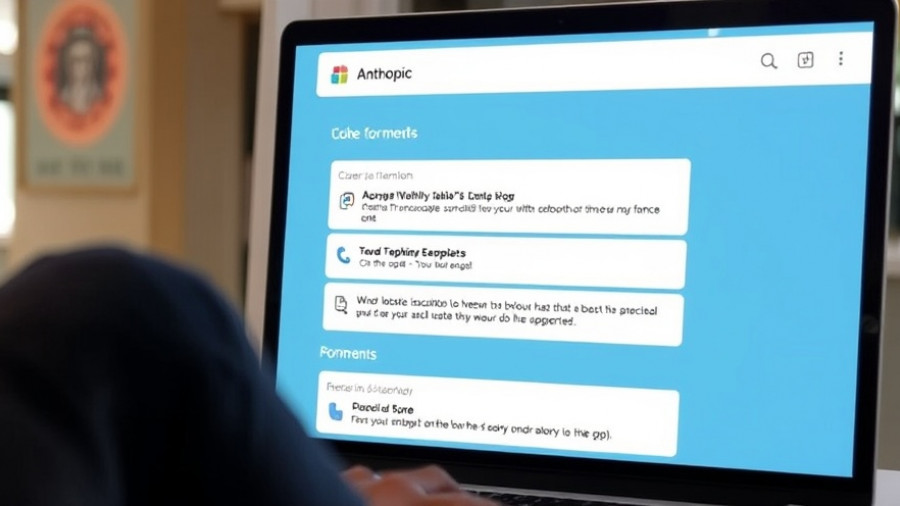
The Rise of Claude AI: Microsoft's Strategic Move
Microsoft's decision to integrate Anthropic's Claude AI models into its 365 Copilot platform has raised eyebrows and sparked interest in the tech community. As businesses strive for competitive edges, Microsoft is positioning itself as a versatile power player in the AI landscape by expanding the tools available to its users. Previously, the Copilot experience was primarily driven by OpenAI's models, but the addition of Claude is more than just an alternative. It reflects a strategic approach to minimize dependency on a single provider while optimizing user experience.
A Deeper Dive: The Dynamics of Claude Models
Anthropic's Claude models, specifically the Claude Sonnet 4 and Claude Opus 4.1, bring unique capabilities to the table. By allowing users the freedom to switch between AI models within Microsoft 365, Microsoft is not just offering diversity but also inviting users to leverage different strengths in their everyday tasks. While OpenAI’s models have been known for their reasoning abilities, Claude’s distinct performance, particularly in coding tasks as demonstrated in Visual Studio Code, has shown impressive results. This dynamic enhances user productivity, enabling them to select the best-suited tool for different applications.
Balancing Innovation: Risk vs. Reward
Adopting multiple AI models introduces a layer of complexity that can be both a boon and a bane. On one hand, users benefit from an expanded toolkit; on the other hand, the blurred line between which model is being utilized can lead to confusion. The concern that AI assistants may become ‘black boxes’ raises legitimate questions about transparency and predictability in AI responses. However, Microsoft's commitment to trial and error with Claude's models suggests they are willing to explore innovation while keeping user productivity at the forefront.
Future Implications for AI Integration
The implications of Microsoft’s partnership with Anthropic are significant in the evolving field of AI. As more applications incorporate diverse AI models, organizations might have to rethink their strategies around AI deployment. Businesses will need to weigh the benefits of model specialization against the potential complexity of managing multiple systems. If Claude models prove successful in Microsoft tools like Excel and PowerPoint, this could signal a shift toward more adaptive AI applications across various platforms.
What’s Next for Microsoft and AI?
As Microsoft continues to expand its offerings, the tech industry will be closely monitoring how this shift influences traditional workflows and productivity methodologies. The trend toward embracing multiple AI systems may outpace initial concerns over usability, providing a robust groundwork for future developments. Will other companies follow suit, or does Microsoft hold a temporary advantage in model diversification? As competition steepens, this kind of strategic innovation could redefine standards in AI application.
Conclusion: The Best Tools for the Job
By integrating Claude models, Microsoft sends a clear message: enhancing productivity is paramount, and having access to the most effective AI tools can deliver results. While there are challenges, the potential to utilize adaptive AI in daily operations suggests a transformational phase in how businesses leverage technology. As users, staying informed and adaptable will offer the best approach to navigating these exciting changes in AI functionality.
 Add Row
Add Row  Add
Add 




Write A Comment